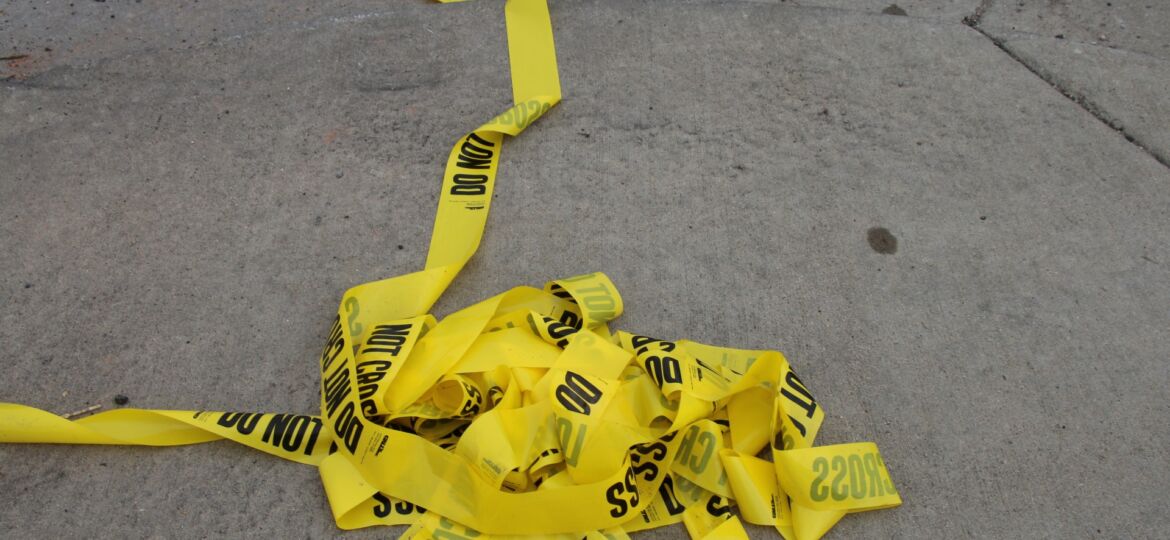
A Horrible History: Colorado’s Plague of Mass Shootings
by Noah Holtgraves
The Boulder King Soopers mass shooting on March 22, 2021, took as many lives as the prior four Colorado mass shootings combined. Colorado has witnessed 12 mass shootings in the last 27 years, claiming 59 lives and injuring another 125 people — many with life-changing afflictions. As these events grow in frequency and severity, experts call for a comprehensive approach to curtail these horrific tragedies.
For Frank DeAngelis, every April is challenging, especially April 20, the anniversary of the Columbine shooting. Retired principal of Columbine High School DeAngelis, now an author and consultant for Jeffco Public Schools, has devoted his life to aiding victims of school shootings. Every time he thinks of slowing down his involvement, another mass shooting calls him to work.
“When Boulder was happening, I was down at Columbine that day for a meeting,” DeAngelis said. “We were getting ready for days of service for the 20th, and I started getting texts: ‘you’re in my thoughts and prayers;’ ‘thinking about you;’ ‘if you need anything.’ Then the media calls. It really took me back; I’m sitting in the library, and all of a sudden, I start seeing some of these images from Boulder. I immediately reached out and started doing some things.”
DeAngelis, who is involved in the Colorado Healing Fund, helped raise millions of dollars in support for victims, families and the whole community affected by the Boulder Supermarket tragedy. He meets with victims and families, guides school leaders and presents all over the nation on recovering from mass tragedies. While the U.S. has made considerable strides in curbing mass violence, DeAngelis acknowledges much of the conversation is the same 22 years later.
Defining a Mass Shooting: There is no all-inclusive definition of a mass shooting. The U.S. The Congressional Research Service defines a mass shooting as:
“A multiple homicide incident in which four or more victims are murdered with firearms — not including the offender(s) — within one event, and at least some of the murders occurred in a public location or locations in close geographical proximity (e.g., a workplace, school, restaurant, or other public settings), and the murders are not attributable to any other underlying criminal activity or commonplace circumstance (armed robbery, criminal competition, insurance fraud, argument or romantic triangle).”
This definition hinges on the number of deaths in a mass shooting, correlating with more extensive news coverage and increased reporting accuracy. It’s not without its limits. This definition for a national database might make sense. Still, to cover mass shootings in Colorado, The Bold editorial team decided to reconfigure the threshold for these horrific events.
In this analysis, The Bold defines a mass shooting as a public homicide incident where one or more victims are murdered with firearms, or five or more victims are injured with firearms — not including the offender(s). We follow the Congressional Research Service definition for most other clarifying attributes. Please see the methodology section at the end of this article for a full explanation.
Under this definition, 12 incidents qualify as mass shootings in Colorado since 1993.
A Comprehensive Approach: Mapping the history of Colorado’s mass shootings leaves one clear takeaway: mass violence happens more frequently in Colorado’s densely populated areas. William Woodward, the director of training and technical assistance for the Center for the Study and Prevention of Violence at CU Boulder and a co-author of the Arapahoe High School shooting study, has some thoughts on why this might be.
“On the Western Slope, the schools are smaller, and in smaller schools, we get closer to that Secret Service recommendation that every child have an adult as someone who they are in contact with or have a relationship with,” Woodward explained.
Woodward emphasized relationship building as a crucial component to preventing mass shootings. Resources are spread thinner in larger schools where the teacher-to-student ratio is broader, and urban schools struggle to build those close-knit, one-on-one relationships. In smaller communities, teachers often know the students’ families, thereby creating a relationship circle that is vital in supporting youth.
On the other side of the Slope, schools with enough funds can implement mass surveillance techniques to make up for the lack of teacher-student relationships as part of a comprehensive approach. The cost for this type of system can be extensive, making the bar of entry for many schools too high. Denver Public Schools utilizes a surveillance program called Gaggle that monitors student emails, documents, links and other forms of digital communication. It is a real-time, 24/7 monitoring service that will wake responders if necessary.
“They have some kids call for help that way,” Woodward said. “They know everything is being monitored, and so some kids will just say, ‘please get over here, my parents are going to kill each other,’ or whatever it is, and they put that in the system, and that gets picked up. It’s kind of intrusive in some ways, but there’s got to be a balance here somehow. But, with 288 incidents in a year, it’s almost one a day.”
In addition to surveillance, Woodward said a safe community climate depends on long-term, all-inclusive and community-based preventative planning. This approach involves transparency, extensive data collection and time on the part of school administrators.
“I don’t know of any schools who are doing that, who had shootings that occurred,” Woodward said. “There are other ways of doing comprehensive planning, so it does not have to be one of our models, but as far as I can tell from other shootings I’ve looked at, and I’ve looked at quite a few, nobody is doing that because it takes time.”
It can happen here: Woodward stressed the need for communities to accept the real possibility that horrific mass violence can happen in their town or city. Without acknowledging the danger, Woodward underlined it is hard to develop the comprehensive approach needed to prevent mass violence.
“Look at the Challenger Spaceship, where the teacher died,” Woodward analogized. “That was a thing where they were so damn sure they were perfect at NASA — they don’t make mistakes. That Morton Thiokol engineer kept saying the damn o-rings are going to get cold — don’t do it! People didn’t pay attention because if you’re perfect, then nothing bad can happen.”
Nuance: When mass shootings happen, reporters, community members and administrators ask, “what is the one thing we can do to stop this?” Solutions touch on contentious topics ranging from gun control to mental health to surveillance. According to DeAngelis, these are all pieces of a complex puzzle, and politics can play a prominent role in each person’s belief in the solution. DeAngelis wants our community to look at the whole puzzle, not just the pieces we like.
“The gun piece is a very important piece,” DeAngelis said. “There are law-abiding gun holders that are going to follow all the rules, but I struggle when a kid can walk into a gun shop in the Arvada community and purchase an automatic weapon. Some of the other things that we need to look at that I worry about are when I hear school districts cutting back on counselors or mental health workers.
“And again, I am not stating that everyone who has some mental health issue is going to be a mass murderer, but there are kids crying out for help.”
Nerd Box: The database created for this article is built on three credible mass shooting databases: The Violence Project Mass Shooter Database funded by the National Institute of Justice; Open-source, Mother Jones – Mass Shootings Database; and The Center for Homeland Defense and Security K-12 School Shooting Database. Additional sourcing was provided through archival news coverage with links to each source. You can download the database in its entirety (CSV format) here.
The Bold’s mass shooting definition: a homicide incident in which one or more victims are murdered with firearms, or five or more victims are injured with firearms — not including the offender(s) — within one event, and at least some of the murders occurred in a public location or locations in close geographical proximity (e.g., a workplace, school, restaurant, or other public settings), and the murders are not attributable to any other underlying criminal activity or commonplace circumstance (armed robbery, criminal competition, insurance fraud, argument, or romantic triangle). We exclude domestic, private mass killings and mass violence events when firearms are not the primary method for inflicting violence. We exclude non-fatal shootings where there are no actual deaths (other than the perpetrator(s), and less than five people are injured by firearms. Public incidents that result in one death but only one shot fired or where the killer(s) targets one victim are also excluded.
MS Excel and Knight Lab StoryMap JS are the two tools used to analyze and create data visualizations for this article.

